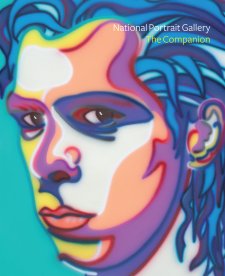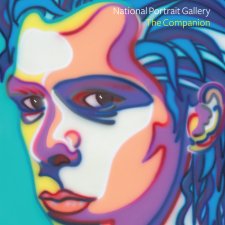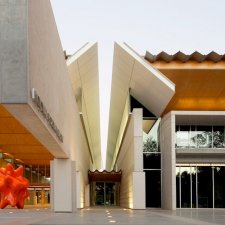- About us
- Support the Gallery
- Venue hire
- Publications
- Research library
- Organisation chart
- Employment
- Contact us
- Make a booking
- Onsite programs
- Online programs
- School visit information
- Learning resources
- Little Darlings
- Professional learning
Pansy Montague, ‘La Milo’ (c. 1885-unknown) appeared as a chorus girl and actress in Melbourne from about 1898, and in 1901 understudied Nellie Stewart in Sydney. In 1905 she appeared in Melbourne and Sydney for Harry Rickards’ Variety Theatre as ‘The Modern Milo’ in a series of poses plastiques described as a ‘Fac-simile of Ancient and Modern Statuary and Sculpture’. Her body measurements were widely advertised as weight 11 stone 8 pounds (73.5kg); bust 37”; waist 26”; hips 42”; thighs 26” apiece. In 1906 she went to England and Europe, where through again exhibiting herself clad in next to naught, she revived public interest in ‘living statues’. In the first half of 1907 the Bishop of London called for the London Council to ban living statues, but at the Coventry Pageant in August 1907 La Milo enacted the role of Lady Godiva, riding a horse for five hours in pink ‘fleshings’ under chiffon drapery and lengthy wig before 150 000 spectators including at least one incensed clergyman. In 1908 at the Grand Hotel, Birmingham, she went through a ceremony of marriage to a man going by the name of Ferdinand Eggena. In 1910, the couple appeared in court along with a motor car agent named Percy Easton, the three accused of fraudulently deceiving a jeweller. Pansy Montague claimed that over the past three years, she had earned five thousand pounds a year and could buy herself all the jewels she wanted. She and Easton were acquitted, but Eggena was convicted. La Milo consistently laid claim to the integrity of her art, in 1910 stating ‘There has been much opposition, much unkind criticism, which has pained me very much, and in a half-night of weeping has made me determine to give the whole business up. The only thing that has prevented me from doing so is the conscientious conviction that I am in the right.’ From late 1914 she toured America to packed houses. Soon after, however, she disappears from the historical record; possibly, the war interrupted the supply of white paint which was made for her by a German chemist to simulate marble. Pansy Montague features in Anita Callaway’s scholarly study Visual ephemera: theatrical art in nineteenth-century Australia (2000).
Collection: National Portrait Gallery
Purchased 2016
Pansy Montague (age 20 in 1905)



On one level The Companion talks about the most famous and frontline Australians, but on another it tells us about ourselves.



Visit us, learn with us, support us or work with us! Here’s a range of information about planning your visit, our history and more!



We depend on your support to keep creating our programs, exhibitions, publications and building the amazing portrait collection!